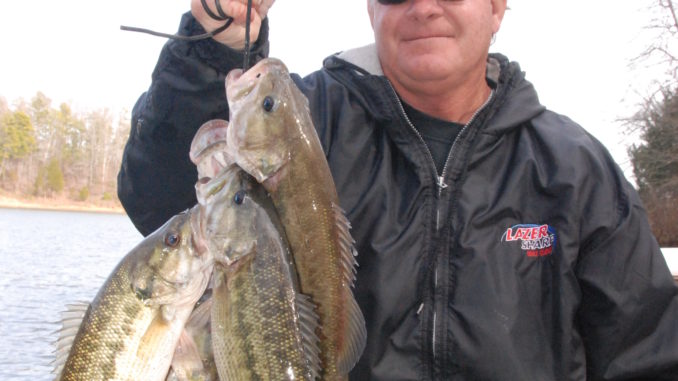
Look for spots on deep flats around brush; they’ll hit live minnows or artificials.
In the elite world of bass fishing, where sparkling, tricked-out bass boats and NASCAR-jerseyed athletes reign supreme, the largemouth bass is king of the castle.
The predecessors of these anglers rejoiced in back in 1983, standing on the banks of the Savannah River in the void between Lakes Hartwell and Clarks Hill, as Trotters Shoals, the original name of Richard B Russell Reservoir, filled with water. The lake promised to be a mecca for largemouth bass anglers.
With its natural shoreline and timber-studded coves, Lake Russell was designated a sportsman’s paradise and promptly began living up to that title. Shortly after the lake was finished and stocking of bass were complete, the old-timers used to say you had to turn your back to bait your hook or the burgeoning population of largemouth bass would snatch it out of your hand.
Dan Rankin, a fisheries biologist for the S.C. Department of Natural Resources, estimated that the kingdom began to crumble, however, in the late 1990s when spotted bass began showing up in the lake. Not native to the Savannah River drainage, spots were thought to have been introduced, either filtering downstream through Hartwell from Lake Keowee where the smaller, more aggressive fish had nearly taken over the lake, or through relocation by anglers from other impoundments.
“We ran a 5-year creel survey through 2009, and we’re getting ready to start a 3-year survey on Russell in 2015,” said Rankin. “But even back through 2009, the percentages of spotted bass to largemouth was very high and climbing throughout the course of that creel survey — maybe as much as 50 percent.”
“Spotted bass started coming on in Russell in the early to mid-90s, coming on in a big way,” Rankin said, “not long after Keowee. I think it was a coordinated stocking effort by anglers. At least some bucket biology went on there, so to speak. I don’t think it was a case of the fish trickling down through the system to Hartwell, (and) then on down to Russell.”
Like it or not, the landscape — or waterscape — of Lake Russell’s black bass fishery has changed. The question is, is that a bad thing?
“It boils down to a matter of size versus numbers,” Rankin said. “The general opinion is that largemouth grow larger than spotted bass and can be more fickle to catch, so it’s perceived that there are fewer largemouth. On the other hand, spotted bass may not achieve the same size — a trophy spot will be in the 3- to 4-pound range — but anglers report that it’s easier to get spotted bass to bite, and because they have those aggressive tendencies, they fight harder.”
Rankin said anglers, like most of the population, have a hard time with change. Change means learning a new way of fishing and that the old ways you’re accustomed to don’t always produce.
“If you look at Keowee, when spotted bass were introduced back in the 80s, everyone said the lake was ruined because of the spotted bass,” said Rankin. “Now, after all these years, more than 50 percent of the folks you’ll ask at Keowee are going to say they like spotted bass because they’ve learned how to catch them.”
One angler who definitely likes the upswing in Lake Russell’s spotted bass is guide Wendell Wilson of Elberton, Ga. He said that, as a guide, most people who come to Russell come to fish, period, and to take in the natural beauty and scenery of the surroundings as well.
“Spotted bass really suit my fishing style, because I like fishing deep, clear water, and I like finding fish on the graph instead of just blindly throwing at stumps,” Wilson said. “I’ve heard some complaints from people about not being able to catch big largemouth anymore but, by and large, spotted bass have been a good thing for my guide service because people can catch more of them and they can take them home to eat. That satisfies a lot of people.”
Wilson’s practice is to pattern spotted bass and baitfish around brush piles and isolated wood on flats that are 20 to 40 feet deep. Those flats can either be off large creek channels or off the main lake in large coves. He doesn’t simply go to those locations and start fishing; he wants to look at an area on his depth finder first. Only when he sees what he likes will he commit to putting bait in the water.
“I’m going to mark the fish and bait before I start fishing, but sometimes, if I see enough bait and I’ve fished a particular location in the last few days, I’ll go ahead and start fishing,” he said. “If I’m in a new area or haven’t been in there in a few days, I really want to see fish and bait on the graph first.”
Wilson’s tactics are split between those of a deep-water bass fisherman and a tight-line crappie angler. He doesn’t mind getting out the hardware, but most of the time, especially with clients on board, he’s going to offer live bait.
“You can tell it’s time when the baitfish start getting closer to the bottom instead of hanging on top; that’s when this deep-water spotted bass fishing really gets good,” said Wilson. “We catch a lot of spots using medium minnows on the drop-shot rig just off the bottom.”
If down rods in rod holders aren’t your thing, Wilson can accommodate by providing artificial baits.
“If somebody on the boat wants to put a 4-inch, drop-shot worm on the hook instead, they can do that, or if they want to use a jigging spoon, that works real well, too,” he said. “But I will say I catch the majority of the spotted bass on my guide trips using either threadfin shad or medium minnows right off the bottom.”
Wilson also prefers not to anchor down, because the commotion can spook fish, and very seldom does he find spots holding in one location for very long.
“I’m going to bump around with the trolling motor and just try to stay with the fish,” he said. “Spotted bass school and tend to move around a lot. They won’t stay on a piece of structure for long; they prefer to move around chasing bait.”
Wilson starts finding spotted bass in this late-fall, early winter pattern when surface water temperatures break the 70-degree barrier and start heading down into the 60s.
“Some years, that pattern will last all through the winter; others, it doesn’t. When it gets too cold, it cuts off,” he said. “Last year, it lasted from mid-October all the way to March, same pattern, but once the surface temperature gets below 45 and stays in the low 40s, it usually shuts down for the bass.”
Anglers will find spotted bass evenly distributed around the Lake Russell during the fall;, however, the upper river arms, and for Wilson, the Georgia side of the lake, is where he does most of his fishing.
“I prefer to fish the Savannah arm mostly just because it’s closer for me, but you can fish the lower reaches of Rocky River and the lower reaches of Beaver Dam and catch just as many fish,” he said. “The Savannah arm from the railroad bridge down to Sanders Ferry Bridge is the area I prefer because I know it better than the other side of the lake.”
DESTINATION INFORMATION
WHEN TO GO/HOW TO GET THERE — Spotted bass in Lake Russell will move to mid-depth flats and structure around mid-October when surface water temperatures drop through the 70-degree mark. The pattern will work until and if the temperature drops below 45 degrees. The best locations are considered “mid-lake” meaning all but the very upper reaches and the main lake forebay. Access to the lake is almost exclusively off SC 81 out of Calhoun Falls; ramps include: Milwood, Calhoun Falls State Park, Beer Garden Creek, Blue Hole and Latimer. Out of Lowndesville, the Felkel ramp is off CR 64, and ramps at Wilson Creek are on CR 72 and Allen Creek are off CR 70.
TACTICS/TECHNIQUES — Spotted bass can be found holding around brush and timber on mid-lake flats from 20 to 40 feet deep. Best locations are areas about halfway up large river tributaries, the mouths of large coves entering the main lake and areas that have suitable structure. Spotted bass can be caught in areas of dense, standing timber, but there are other, easier places to catch them. A tight-line presentation of live minnows fished on a drop-shot rig works well. Rather than anchoring in a specific location, use a trolling motor to maneuver over the area to stay up with the fish.
RUSSELL REGS — The daily creel limit for all black bass species on Lake Russell is 10 fish per person in aggregate. This includes largemouth, smallmouth, spotted, or redeye bass. There are no minimum size limits for spotted bass on Lake Russell. The S.C. Department of Natural Resources forbids intentionally releasing any aquatic species into lakes without a permit, so don’t think about dumping minnows purchased at a tackle shop.
GUIDES/FISHING INFO — Wendell Wilson, Wilson’s Guide service, 706-283-3336, www.wilsonsguideservice.com; Sportsman’s One Stop, 9807 South Highway 81, Iva, 864-348-2840. See also Guides and Charters in Classifieds.
MAPS — Kingfisher Maps, 800-326-0257, www.kfmaps.com; Delorme South Carolina Atlas & Gazetteer, 800-561-5105, www.delorme.com.

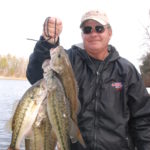
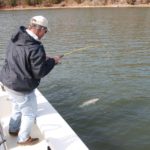
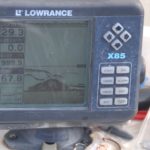
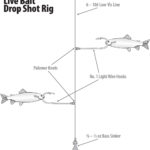
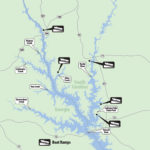

Be the first to comment